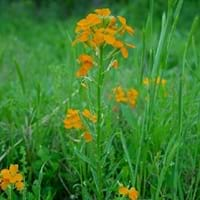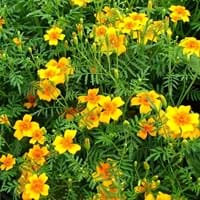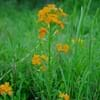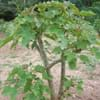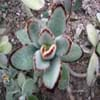Life Span
Annual and Perennial
Annual
Type
Tender Perennial
Flowering Plants, Shrubs
Origin
Southern Europe, Mediterranean
Central America, Colombia, Mexico
Types
Not Available
Not Available
Number of Varieties
Not Available
Habitat
gardens, Grassland, Prairies
Roadsides, wastelands
USDA Hardiness Zone
7-9
9-11
AHS Heat Zone
9-7
Not Available
Sunset Zone
4, 5, 6, 14, 15, 16, 17, 18, 19, 20, 21, 22, 23, 24
Not Available
Habit
Mat-forming
Upright/Erect
Flower Color
Light Yellow
Orange, Yellow
Flower Color Modifier
Bicolor
Bicolor
Fruit Color
Green
Not Available
Leaf Color in Spring
Gray Green
Green
Leaf Color in Summer
Gray Green
Dark Green
Leaf Color in Fall
Gray Green
Dark Green
Leaf Color in Winter
Light Green
Dark Green
Leaf Shape
Linear
Toothed
Plant Season
Spring, Summer, Fall, Winter
Fall, Spring, Summer
Sunlight
Full Sun, Partial Sun
Full Sun, Part sun
Growth Rate
Fast
Very Fast
Type of Soil
Loam, Sand
Loamy, Sandy, Well drained
The pH of Soil
Neutral, Alkaline
Neutral, Slightly Alkaline
Soil Drainage
Well drained
Well drained
Bloom Time
Spring, Late Spring, Early Summer, Summer, Late Summer, Early Fall
Early Fall, Early Summer, Fall, Late Fall, Late Summer, Summer
Tolerances
Drought
Drought
Where to Plant?
Container, Ground, Pot
Container, Ground, Pot
How to Plant?
Seedlings, Stem Cutting
Seedlings
Plant Maintenance
Medium
Medium
Watering Requirements
Allow soil to be completely dry in between waterings, Water Deeply, Water less during winter
Allow soil to be completely dry in between waterings, Form a Soil ring to water efficiently, Keep the ground moist but not water-logged, Water in morning to avoid prompting diseases, Water when soil is dry
In Summer
Lots of watering
Lots of watering
In Spring
Moderate
Moderate
In Winter
Average Water
Average Water
Soil pH
Neutral, Alkaline
Neutral, Slightly Alkaline
Soil Type
Loam, Sand
Well drained
Soil Drainage Capacity
Well drained
Well drained
Sun Exposure
Full Sun, Partial Sun
Full Sun, Part sun
Pruning
Cut or pinch the stems, Do not prune during shooting season, Prune if you want to improve plant shape, Prune prior to new growth, Remove deadheads
Prune ocassionally, Remove dead or diseased plant parts, Requires little pruning
Fertilizers
All-Purpose Liquid Fertilizer
All-Purpose Liquid Fertilizer
Pests and Diseases
fungus, Insects, Red blotch
Alternaria Leaf Spot, Bacterial leaf spot, Damping-off, Gray mold, Powdery mildew, Root rot
Plant Tolerance
Drought
Drought
Flower Petal Number
Single
Single
Fragrant Bark/Stem
No
Yes
Foliage Texture
Fine
Fine
Foliage Sheen
Matte
Matte
Attracts
Bees, Birds, Butterflies
Butterflies
Allergy
Skin irritation
Asthma, Eye irritation, Red eyes, Runny nose, Throat itching, Watery eyes
Aesthetic Uses
Beautification, Showy Purposes
Showy Purposes
Beauty Benefits
Not Available
Not Available
Environmental Uses
Air purification
Air purification
Medicinal Uses
No Medicinal Use
Burns, constipation, Inflammation, Upset stomach, Wounds
Part of Plant Used
Whole plant
Flowers, Seeds
Other Uses
Showy Purposes
Food for animals, Food for insects, Used As Food, Used for its medicinal properties
Used As Indoor Plant
No
No
Used As Outdoor Plant
Yes
Yes
Garden Design
Alpine, Container, Edging, Foundation, Groundcover, Mixed Border, Rock Garden / Wall
Bedding Plant, Edging, Foundation, Houseplant, Mixed Border
Botanical Name
Erysimum capitatum
Tagetes tenuifolia
Common Name
Sanddune Wallflower, Western Wallflower, Prairie Rocket
signet marigold, golden marigold
In Hindi
रेत टिब्बा Wallflower
गोल्डन गेंदा
In German
Sanddüne Wallflower
Schmalblättrige Studentenblume
In French
Sable Dune Wallflower
Tagète citron
In Spanish
Duna de arena Wallflower
Tagetes tenuifolia
In Greek
Sand Dune Wallflower
χρυσή κατιφέ
In Portuguese
Duna Wallflower
calêndula ouro
In Polish
Wydma Wallflower
Aksamitka wąskolistna
In Latin
Sand Dune Wallflower
caltha
Phylum
Magnoliophyta
Tracheophyta
Class
Magnoliopsida
Magnoliopsida
Order
Brassicales
Asterales
Family
Brassicaceae
Asteraceae
Clade
Angiosperms, Eudicots, Rosids
Not Available
Tribe
Not Available
Not Available
Subfamily
Not Available
Not Available
Number of Species
Not Available
Season and Care of Sanddune Wallflower and Golden Marigold
Season and care of Sanddune Wallflower and Golden Marigold is important to know. While considering everything about Sanddune Wallflower and Golden Marigold Care, growing season is an essential factor. Sanddune Wallflower season is Spring, Summer, Fall and Winter and Golden Marigold season is Spring, Summer, Fall and Winter. The type of soil for Sanddune Wallflower is Loam, Sand and for Golden Marigold is Loamy, Sandy, Well drained while the PH of soil for Sanddune Wallflower is Neutral, Alkaline and for Golden Marigold is Neutral, Slightly Alkaline.
Sanddune Wallflower and Golden Marigold Physical Information
Sanddune Wallflower and Golden Marigold physical information is very important for comparison. Sanddune Wallflower height is 30.50 cm and width 30.50 cm whereas Golden Marigold height is 150.00 cm and width 100.00 cm. The color specification of Sanddune Wallflower and Golden Marigold are as follows:
Sanddune Wallflower flower color: Light Yellow
Sanddune Wallflower leaf color: Gray Green
Golden Marigold flower color: Orange and Yellow
- Golden Marigold leaf color: Green
Care of Sanddune Wallflower and Golden Marigold
Care of Sanddune Wallflower and Golden Marigold include pruning, fertilizers, watering etc. Sanddune Wallflower pruning is done Cut or pinch the stems, Do not prune during shooting season, Prune if you want to improve plant shape, Prune prior to new growth and Remove deadheads and Golden Marigold pruning is done Prune ocassionally, Remove dead or diseased plant parts and Requires little pruning. In summer Sanddune Wallflower needs Lots of watering and in winter, it needs Average Water. Whereas, in summer Golden Marigold needs Lots of watering and in winter, it needs Average Water.
